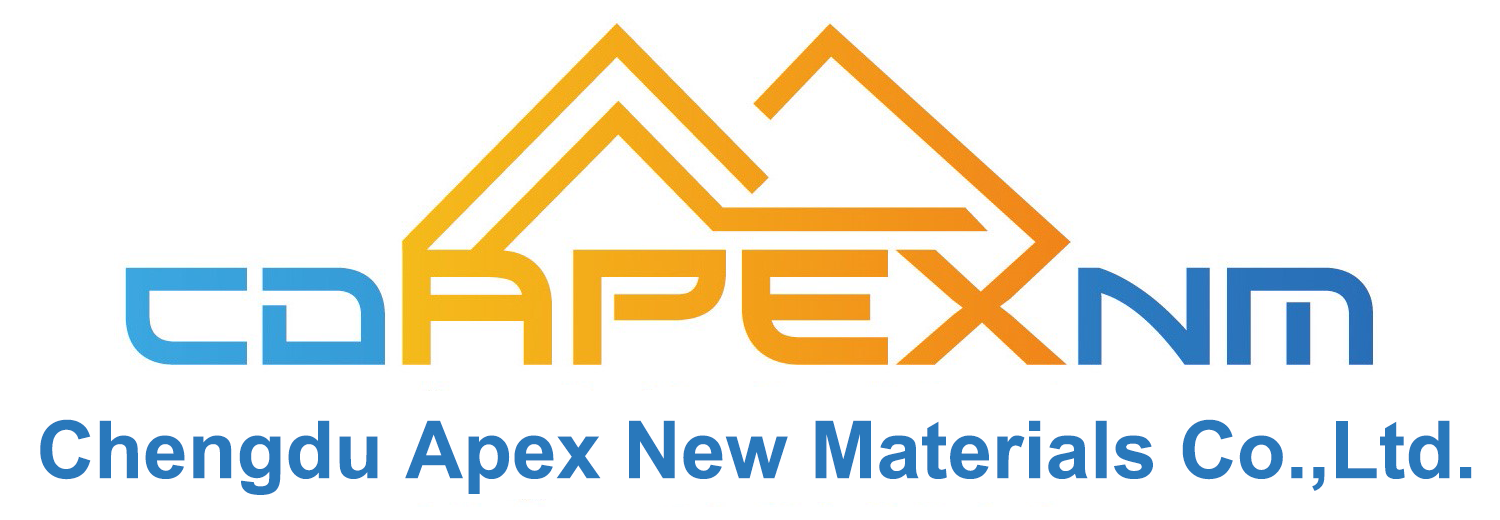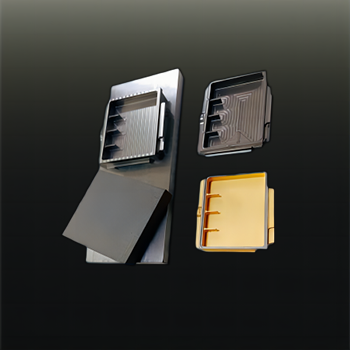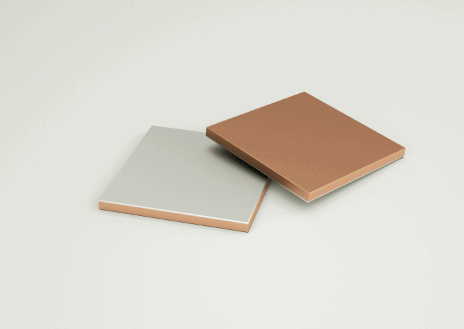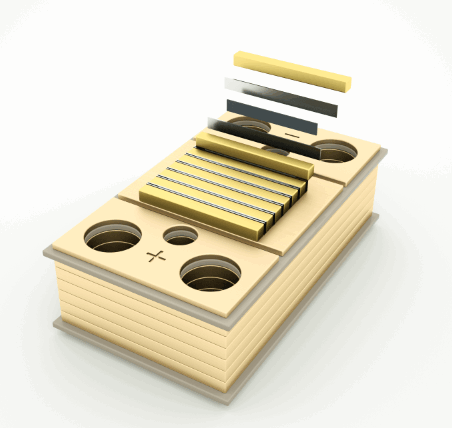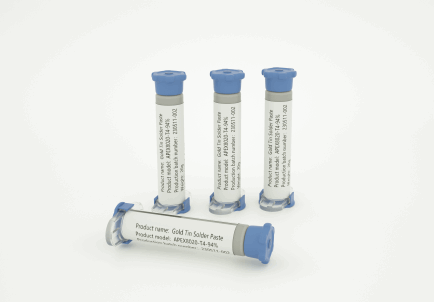Introduction to brazing process and material selection
Introduction to brazing process and material selection
Brazing refers to a welding method in which the solder and the workpiece are heated to the melting temperature of the solder at a temperature lower than the melting point of the weldment, and the gap between the solid workpieces is filled with liquid solder to connect the metals. During the brazing process, the material is heated to a temperature higher than the filler material, and the filler metal becomes liquid, covering all mating surfaces and forming a metallurgical bond. When brazing, the oxide film and oil stains on the contact surface of the parent material must be removed first to facilitate the capillary to play a role after the solder melts, increase the wettability and capillary fluidity of the solder.
I. Classification of brazing
1. According to the melting point of the solder, brazing is divided into hard soldering and soft soldering.
(1) Soft soldering: The melting point of the solder for soft soldering is lower than 450°C, and the joint strength is relatively low (less than 100MPa). Soft soldering is mostly used for welding conductive, airtight and watertight devices in the electronics and food industries. Tin soldering with tin-lead alloy as the solder is the most commonly used. Soft solder generally requires a flux to remove the oxide film and improve the wetting properties of the solder.
(2) Brazing: The melting point of brazing solder is higher than 450°C, and the joint strength is relatively high (greater than 200 MPa). Brazing joints are strong and some can work at high temperatures. There are many types of brazing solders, and aluminum, silver, copper, manganese and nickel-based solders are the most widely used.
Aluminum-based solders are commonly used for brazing aluminum products; silver-based and copper-based solders are commonly used for brazing copper and iron parts; manganese-based and nickel-based solders are mostly used to weld stainless steel, heat-resistant steel and high-temperature alloy parts that work at high temperatures; palladium-based, zirconium-based and titanium-based solders are commonly used for welding refractory metals such as beryllium, titanium, zirconium, graphite and ceramics. When selecting a brazing solder, the characteristics of the base material and the requirements for joint performance should be considered. Brazing flux is usually composed of chlorides and fluorides of alkali metals and heavy metals, or borax, boric acid, fluoroborate, etc., and can be made into powder, paste and liquid. Lithium, boron and phosphorus are also added to some brazing materials to enhance their ability to remove oxide films and wet. After welding, the flux residue is cleaned with warm water, citric acid or oxalic acid.
2. According to the different heat sources, it can be divided into:
(1) Soldering iron brazing: simple equipment, good flexibility, suitable for micro brazing, need to use flux, can only be used for soft soldering, brazing small parts.
(2) Flame brazing: simple equipment, good flexibility, but difficult to control temperature, can only be used for brazing small parts. Flame brazing is a brazing method that uses a flame formed by the combustion of a combustible gas, a combustible solid or liquid fuel gasified with oxygen or air to heat the workpiece and the brazing material. The selection of solder is wide, ranging from low-temperature silver-based solder to high-temperature nickel and copper-based solder. There are almost no requirements for the shape of the solder. Wire, sheet, preformed or paste solder can be used in flame brazing.
(3) Metal bath brazing: fast heating, precise temperature control, high solder consumption, used for soft soldering and mass production.
(4) Salt bath brazing: the brazing alloy is assembled and placed in a molten salt bath. The bath can be heated by electricity, gas or other fuels. The salt heats the workpiece and melts the solder. This process has a fast heating speed and can precisely control the temperature. The equipment cost is high and the equipment needs to be cleaned after welding. It is used for mass production and cannot weld closed workpieces.
(5) Vapor phase brazing: uniform heating and high brazing quality. It is used for soft soldering and mass production.
(6) Resistance brazing: high production efficiency, low cost, difficult to control temperature, and limited workpiece shape and size. It is a brazing method that uses the resistance heat generated by the current passing through the weldment, the solder or the contact surface between the solder and the weldment to heat the weldment and melt the solder.
(7) Induction brazing: Induction brazing places the part to be welded in an alternating magnetic field. The resistance of the induced current in the coil placed around the workpiece provides heat for the induction brazing process, and the resistance heating melts the pre-placed filler metal. This process can selectively heat the workpiece for brazing only where it is needed. It has the characteristics of fast heating, good brazing quality, and limited workpiece shape. It is suitable for batch brazing of small parts.
(8) Brazing in a protective gas furnace: uniform heating, small deformation, generally no brazing flux is required, slow heating, and the brazing material and workpiece should not contain a large amount of volatile elements. It is suitable for batch production of large and small parts and brazing of workpieces with multiple brazing seams.
(9) Vacuum brazing: It is a method of heating and brazing the welded parts assembled with brazing flux in a vacuum furnace. It can accurately control the temperature, heat evenly, and has small deformation. It can braze difficult-to-weld high-temperature alloys. It does not require brazing flux and has good brazing quality. It is generally used for brazing important workpieces. The more advanced AMB (Active Metal Brazing) active brazing process technology also belongs to vacuum brazing. AMB is a process technology that wets and reacts Ag-based solder containing active elements Ti and Zr at the interface of ceramic and metal at a high temperature of about 800°C, thereby achieving heterogeneous bonding between ceramic and metal.

2. Process characteristics of brazing
Brazing has several significant characteristics:
1. Low temperature: The melting point of the brazing material used in brazing is lower than the melting point of the metal to be connected. Therefore, the metal to be connected will not be melted during the connection process, but the filler metal will be melted. Therefore, the required heating temperature is relatively low.
2. No damage to the surface of the original part: Due to the low melting point of the brazing material, the surface quality of the metal to be connected will not be damaged during the connection process, and the appearance and performance of the original part can be maintained.
3. Wide applicability: Brazing can be used to connect different types of materials, such as: dissimilar metal bonding, metal and non-metal connection, and fiber and dispersion-reinforced composite materials, making it widely used in multiple industries and fields.
4. Reliable strength: The brazing process can provide a strong and lasting connection, so that the connected parts have high strength and durability.
5. No need for the same material: Compared with other welding methods, brazing does not require the metal to be connected and the brazing filler to have the same composition. These characteristics make brazing an important metal connection technology and are widely used in many fields.
3. Selection and classification of brazing materials
In the brazing process, in addition to the parent material having a great influence on the brazing strength, the selection of brazing filler materials is also very important. With the correct selection of brazing filler and matching brazing method, brazing can use almost any commercially available filler material to provide a strong joint. In the brazing process, the process in which the brazing filler penetrates into the base metal and forms an alloy with the base metal is called diffusion. Under high temperature and high stress conditions, filler materials that are easy to diffuse and can form alloys with the base metal should be preferred. When the component is composed of an extremely thin base metal, a filler material with low diffusion is usually selected. The strength of the joint depends on the joint design, stress state, brazing temperature, amount of brazing, heating rate, holding time at peak temperature, and many other factors to consider. When selecting filler materials, the first thing to consider is the operating temperature. Very few filler materials have different melting points. Solders with close solidus and liquidus lines generally do not show a strong tendency to separate, and they are relatively fluid. Secondly, the degree of alloying of the filler material with the base metal must be considered; alloying can improve the mechanical properties of the joint and increase the remelting temperature of the joint. Finally, the placement of the filler material is also an important consideration, not only because the placement method needs to be close to the joint, but also because the filler material must be kept in place until it melts during the heating process. Filler materials come in different forms. The most common forms of filler materials are: wire, powder, foil, solder paste, strip, gasket, etc. The choice of material form depends mainly on the design of the specific joint. In order to achieve satisfactory application results in brazing, the brazing filler metal must have the following characteristics:
1. Appropriate fluidity at the brazing temperature to ensure flow through capillary action and provide uniform alloy distribution;
2. Stability to avoid premature release of low-melting-point elements in the filler metal;
3. The ability of the brazing filler metal to wet the surface of the parent metal joint;
4. Low volatility of the brazing filler alloy elements at the brazing temperature;
5. The ability to form an alloy or bond with the parent metal to form an alloy with a higher melting temperature;
6. Controllable cleaning or corrosion between the filler metal and the parent metal within the range required by the brazing operation;
7. The ability to produce or avoid interaction between the base metal and the filler metal according to the requirements of use.
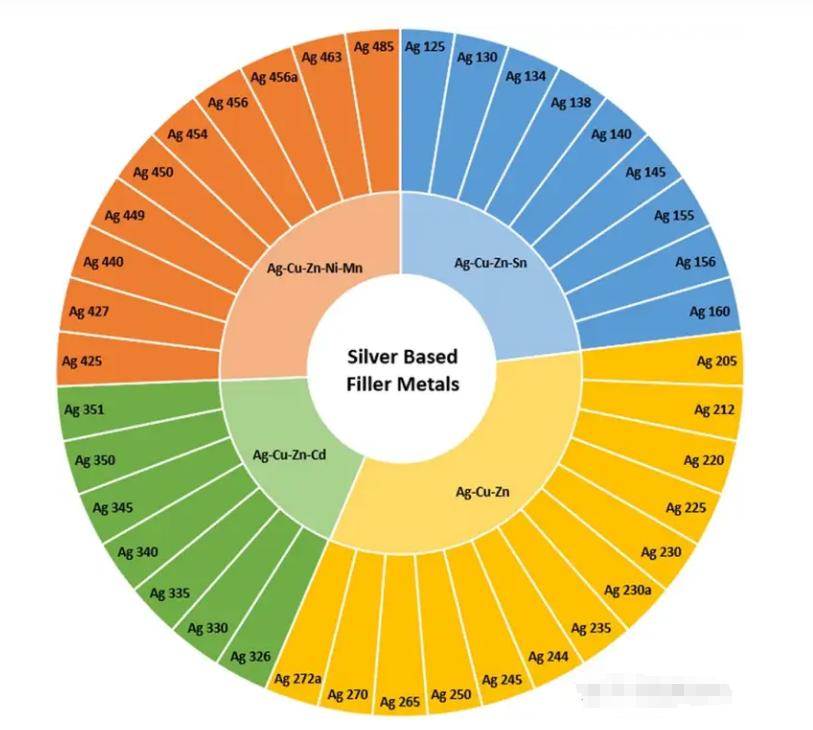
Classification of soldering materials:
Soft solder
Commonly used soft solders include tin-lead-based, lead-based (T<150℃, generally used for brazing copper and copper alloys, with good heat resistance but poor corrosion resistance), cadmium-based (the best heat-resistant type of soft solder, T=250℃) and zinc-based alloys. Soft solders are mainly used for welding workpieces with low stress and low working temperature. They are widely used in electronic products, motors and electrical appliances, and automotive accessories, such as the connection of various electrical wires and the brazing of instrument and meter components. Tin-lead material is the most widely used type of soft solder. When the high tin-lead alloy contains Sn1.9%, a eutectic with a melting point of 183℃ is formed. Most of the existing low-temperature fillers are tin-based alloys, such as binary Sn-Ag, Sn-Cu and Sn-Bi, or ternary Sn-Bi-Zn and Sn-Ag-Cu.
Brazing filler metal
Common brazing filler metals include: copper-based brazing filler metal, silver-based brazing filler metal, aluminum-based brazing filler metal (mainly used for brazing aluminum and aluminum alloys) and nickel-based brazing filler metal, molybdenum-based brazing filler metal, titanium-based brazing filler metal, etc.
01 Copper-based brazing filler metal
Copper-based brazing filler metals have been widely used in brazing of steel, alloy steel, copper and copper alloys due to their good economy. The main materials are copper-phosphorus and copper-based alloys. Copper-phosphorus alloys are mainly composed of copper and 5-7.5wt-% phosphorus. Other small additions include silver (up to 20wt-%) and tin (up to 7.5wt-%). Compared with other filler metals, the main advantage of copper-phosphorus alloys is that they do not require flux when pure copper is connected in air, thus saving time and cost. Phosphorus reacts with oxygen in the atmosphere to form phosphorus pentoxide, which reacts with surface copper oxide to form fusible slag, which does not cause corrosion. At present, the research and development of copper and copper-phosphorus-based filler metals are mainly concentrated in heat exchangers in the automotive industry. OKC600 (Aurubis) is a copper-based filler metal containing 4.2wt-% nickel, 15.6wt-% tin and 5.3wt-% phosphorus. It is the emergence of this filler material that has made copper heat exchangers compete with aluminum heat sinks again.
02 Aluminum-based
Aluminum-based brazing filler metal: For low melting temperature aluminum alloy materials, the filler metal must have a lower melting temperature than the joining material, which is a major limitation. Most filler metals used for brazing aluminum are based on the aluminum-silicon system, and silicon suppresses the liquidus temperature to 580–630°C. In general, aluminum brazing requires more precise temperature control than brazing other materials. Even with the addition of silicon, the gap between the melting points of the filler and the parent material is small, resulting in a narrow process window, and the stable Al2O3 oxide must be removed for successful brazing. Many high-strength aluminum alloys cannot use Al-12Si eutectic alloys because the degree of alloying suppresses the parent material solidus, and the use of Al-12Si will result in performance degradation and even partial melting. To circumvent this problem, alloys with lower melting points were investigated in the ternary Al-Cu-Si system. While copper suppresses the melting temperature, it also allows CuAl2 to form intermetallic compounds at the braze interface, which leads to embrittlement. To address this problem, Sn (and Mg as a wetting agent) was introduced to form the Al-7Si-20Cu-2Sn-1Mg alloy. Researchers have also added rare earth elements to Al-Si alloys to improve wettability and hardness without affecting the melting temperature. Lanthanum and cerium added to Al-12Si alloys increase wettability and strength of LD2 and LD30 alloys compared to AlSiMg alloys. Aluminum-based filler metals can also join aluminum to titanium to form lightweight, corrosion-resistant and low-cost structures. Germanium and rare earth additions to the basic Al-12Si system have enabled 6061 aluminum to be successfully brazed on Ti-6Al-4V at 530°C.
03 Silver-based
Silver-based solder is the most widely used brazing filler metal. Since its melting temperature is not very high, it can wet many metals, and has good thermal conductivity, electrical conductivity, and corrosion resistance. It is widely used in brazing stainless steel, copper and copper alloys, Kovar alloys, refractory metals, etc. Silver-based solder is a type of brazing filler metal that is mainly composed of silver or silver-based solid solution and added with metal elements such as Cu, Zn, and Ni. It has a low melting point and excellent strength, plasticity, and corrosion resistance. Common systems include Ag-Cu and Ag-Cu-Zn systems, among which AgCu28 and BAg45CuZn are more commonly used. AgCu28 is a eutectic solder that has good wettability for a variety of carbon steels and non-ferrous metals, is not easy to produce intermetallic compounds, and is easy to obtain welds with good performance. It is a template material for brazing process analysis. BAg45CuZn has good spreading and filling capabilities. Cu is the main added element, which can reduce the melting point and cost of solder and produce no brittle phase. Zn can reduce the melting point, but when the content is too high, it will produce brittle phase in the joint. Ti can improve the wettability and ductility of silver-based solder. In addition to the above materials, researchers have studied various ternary and quaternary systems based on silver, copper and zinc, including: Ag-Cu-Zn-Ga, silver-copper-zinc-nickel, silver-copper-indium, silver-copper-tin and silver-copper-zinc-tin, etc., and finally selected tin as a suitable substitute for cadmium. Many manufacturers use Ag-Cu-Zn-Sn quaternary filler metal. However, the cost of silver-based solder is relatively high, which limits its application.
04 Nickel-based
Nickel-based solder has good high-temperature strength and oxidation resistance. The brazing temperature is generally 1050~1250℃, and it is used to braze stainless steel and high-temperature alloy parts. Nickel-based solder is mainly nickel, and metal elements such as B, Si, and P that can reduce its melting point are added. Mainly in powder, paste, and amorphous form. They are used in places where high operating temperatures are required and good corrosion resistance is required, such as brazing of nickel-based and cobalt-based high-temperature alloys and stainless steel. Nickel-based filler metals are the first choice for connecting high-temperature alloy parts in aerospace and other industries.
05 Titanium-based
Titanium-based brazing fillers have the advantages of high welding strength, good wettability, and good corrosion resistance. Titanium-based brazing fillers have three forms: powder, paste, and thin sheet stacking. The most commonly used process in the aerospace field is the brazing of titanium alloys, especially Ti6Al4V and aluminum alloy parts, such as 5A06 aluminum alloy, A6061-T6 aluminum alloy, and 5052 aluminum alloy.
06 Gold-based
Gold-based brazing fillers have the advantages of low vapor pressure, good wettability, and excellent oxidation and corrosion resistance. The main added elements are Ni, Cu, Zn, Pd, In, etc. Cu can reduce the melting point and cost of the brazing filler. While reducing the melting point of the brazing filler, Ni can also improve the high-temperature strength and corrosion resistance of the brazing filler, and make the brazing filler have good wettability and fluidity. Gold-based brazing filler metals are very expensive due to their high Au content, so they are only used for vacuum or inert gas furnace brazing of important parts in the aerospace field. They have good mechanical properties and good oxidation resistance at high temperatures.
With the rapid development of the manufacturing industry, brazing technology is becoming more and more widely used, and is developing towards green, efficient, automated and highly reliable. The selection of brazing filler metals is based on many factors, such as substrate type, operating temperature, gap size, brazing method, brazing filler metal shape and size, and regulations on the use of toxic materials in brazing. In the future, research and exploration can be conducted from three aspects: alloy properties, brazing filler metals and brazing processes, to obtain higher performance alloys and brazing joints, and to promote the development and application of brazing materials in various industries.
